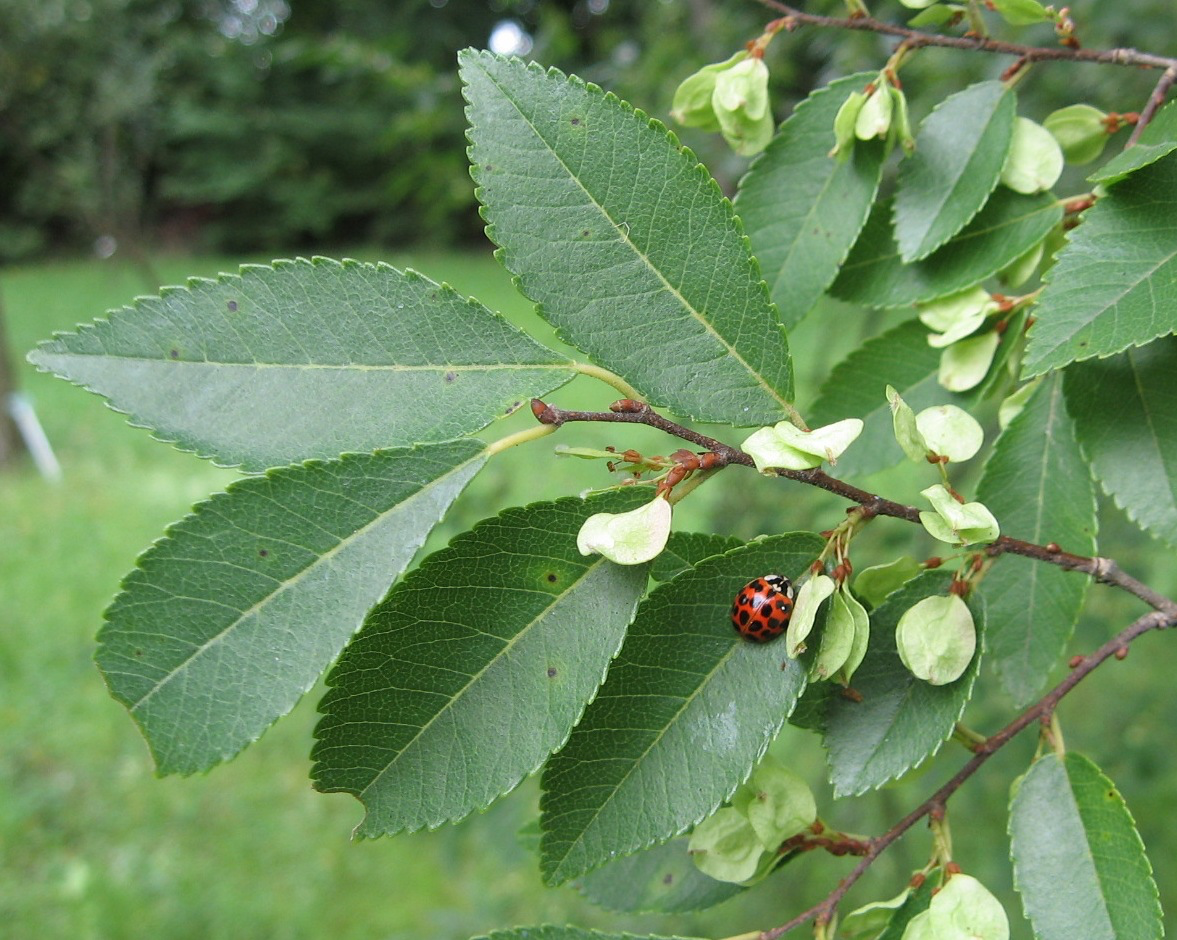Lacebark
No. in Woodland Park: 4
No. in good health: 3
No. in fair health: 1
No. in poor health: 0
Ulmus parvifolia, commonly known as the Chinese elm or Lacebark Elm, is a species native to China, India, Taiwan, Japan, North Korea, and Vietnam. It has been described as "one of the most splendid elms, having the poise of a graceful Nothofagus.
A small to medium deciduous, semi-deciduous (rarely semi-evergreen) tree growing to 10–18 m (30–60 ft) tall and 15-20 m (50-70 ft) wide with a slender trunk and crown. The leathery, lustrous green single-toothed leaves are small, 2–5 cm long by 1–3 cm broad, and often retained as late as December or even January in Europe and North America. The apetalous wind-pollinated perfect flowers are produced in early autumn, small and inconspicuous. The fruit is a samara, elliptic to ovate-elliptic, 10–13 mm long by 6–8 mm broad. The samara is mostly glabrous, the seed at the centre or toward the apex, borne on a stalk 1–3 mm in length; it matures rapidly and disperses by late autumn. The trunk has a handsome, flaking bark of mottled greys with tans and reds, giving rise to its other common name, the Lacebark Elm, although scarring from major branch loss can lead to large canker-like wounds.


